全站搜索
Buscar en todo el sitio web
Buscar en todo el sitio web
Hammer crusher relies on the impact force to crush materials, which can crush various sized materials into uniform particles and then move to the next working step.
Hammer crusher is suitable for crushing various medium hardness and brittle materials, such as limestone, coal, salt, white ore, gypsum, alum, brick, tile, coal gangue, etc. The compressive strength of the crushed materials does not exceed 150MPa, and the water content is less than 15%. It is widely used in cement, coal preparation, power generation, building materials and compound fertilizer industries. It can crush raw materials of different sizes into uniform particles to facilitate the next process. It has reliable mechanical structure, high production efficiency and good applicability.
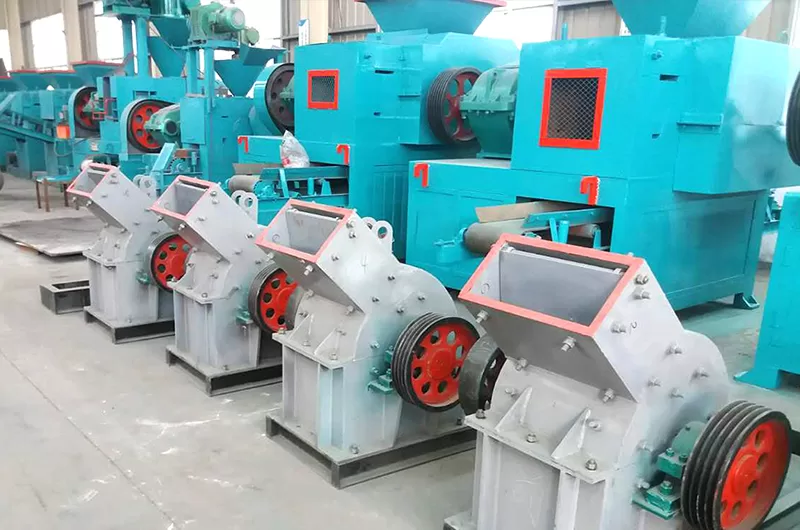
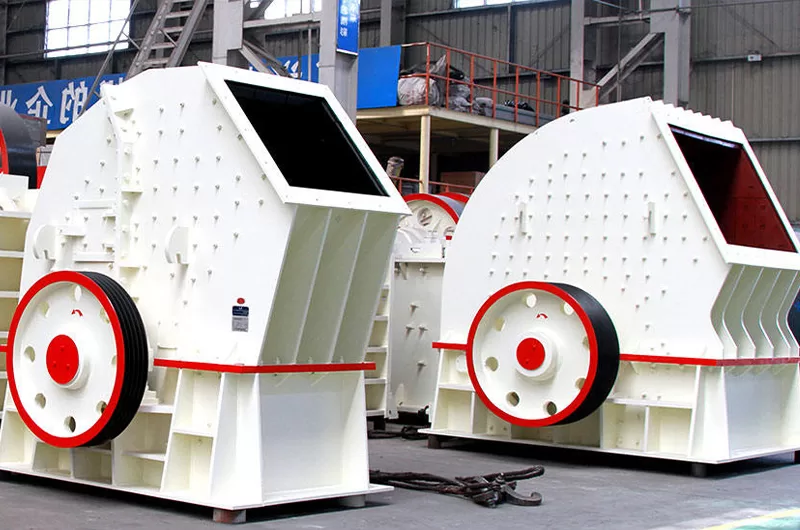
Hammer crusher is suitable for crushing various medium hardness and brittle materials, such as limestone, coal, salt, white ore, gypsum, alum, brick, tile, coal gangue, etc. The compressive strength of the crushed materials does not exceed 150MPa, and the water content is less than 15%. It is widely used in cement, coal preparation, power generation, building materials and compound fertilizer industries. It can crush raw materials of different sizes into uniform particles to facilitate the next process. It has reliable mechanical structure, high production efficiency and good applicability.
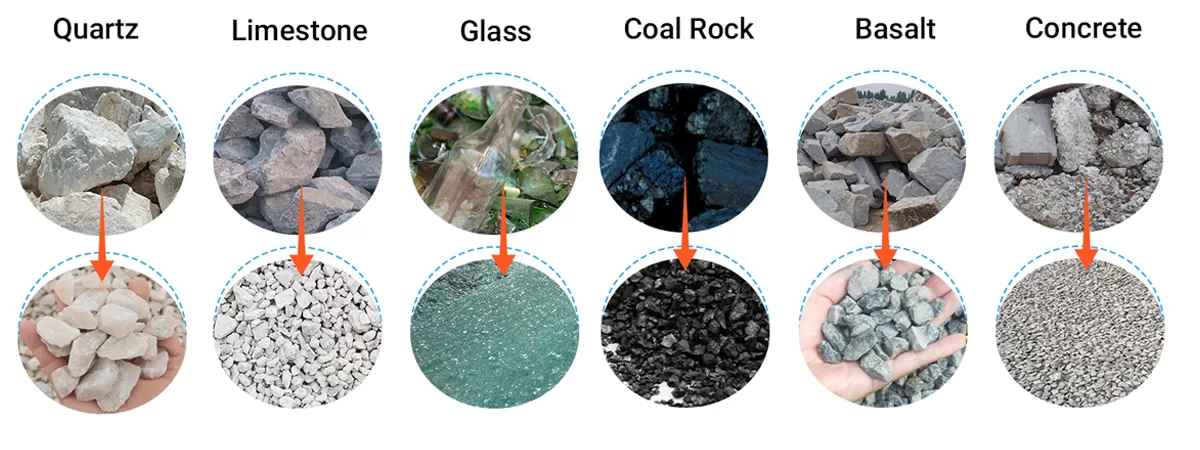
Hammer crusher whose purpose is to shred or crush aggregate material into smaller pieces by the repeated blows of little hammers. The basic principle is straightforward. A hammer crusher is essentially a steel drum containing a vertical or horizontal rotating shaft or drum on which hammers are mounted. The hammers are free to swing on the ends of the cross, or fixed to the central rotor. The rotor is spun at a high speed inside the drum while material is fed into a feed hopper. The material is impacted by the hammer bars and is thereby shredded and expelled through screens in the drum of a selected size. The hammer crusher can be used as a primary, secondary, or tertiary crusher.
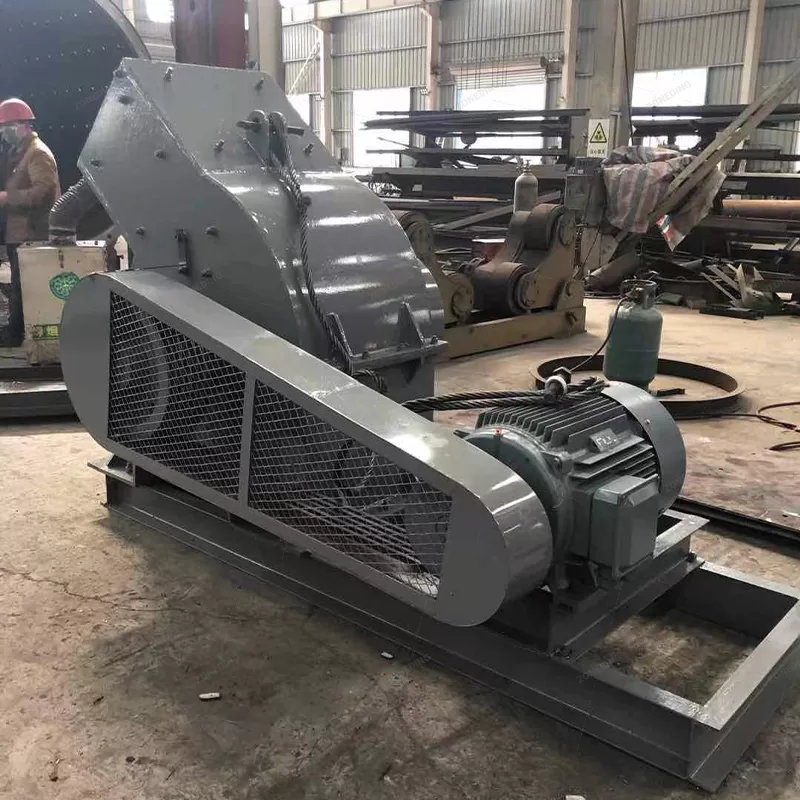
hammer crusher
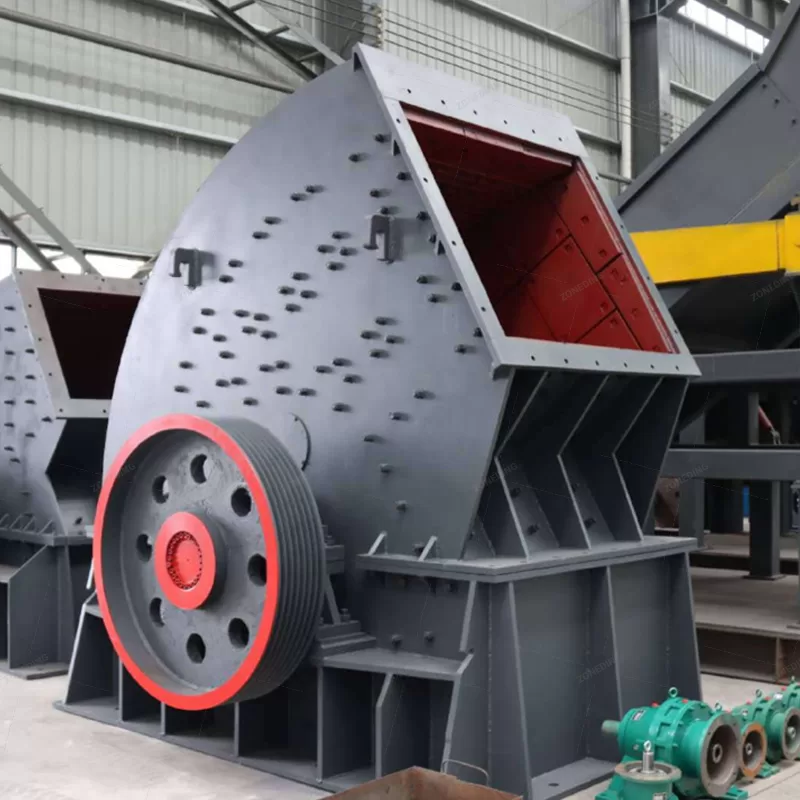
Heavy type hammer crusher
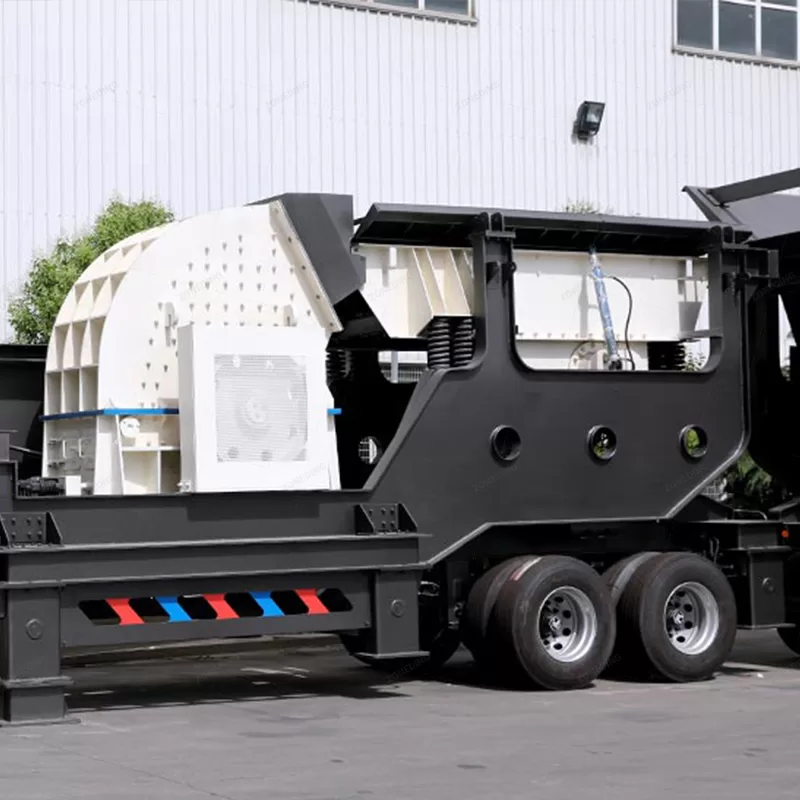
Mobile Hammer Crusher
A hammer mill crusher is mainly composed of the frame, rotor, hammer head, main shaft, and other components.
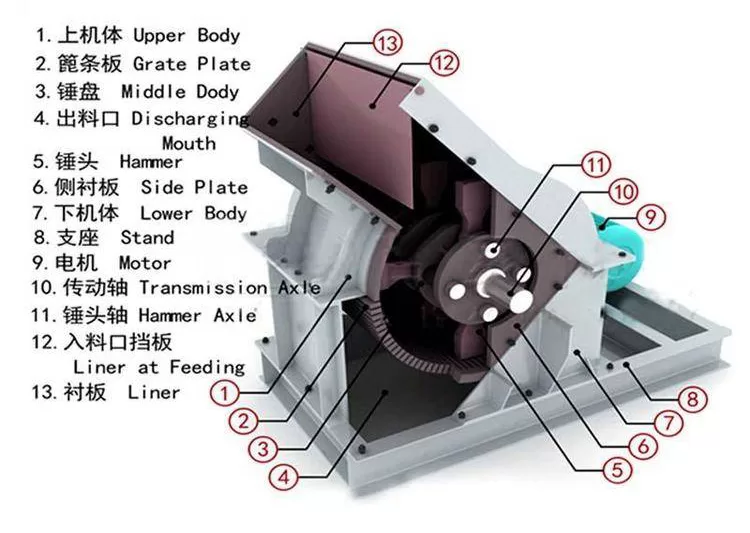
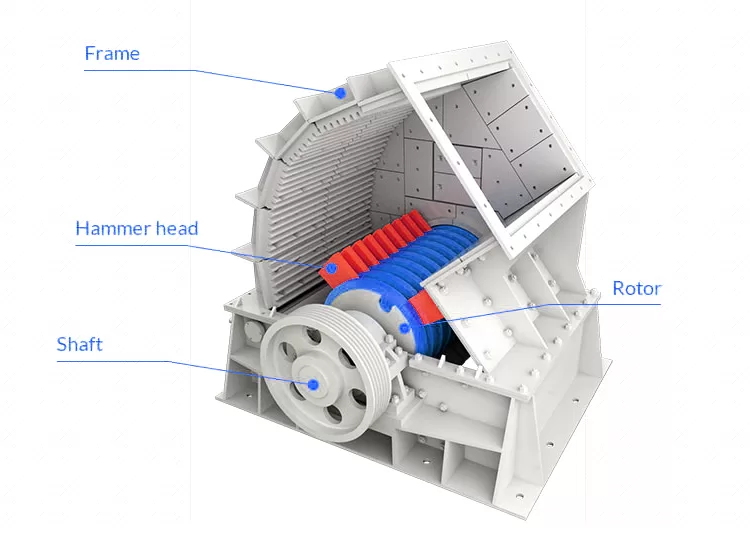
In the hammer crusher, the motor drives the rotor to rotate at a high speed through the belt, and on the rotor there are series of hammers. When the materials get into the working area of hammers, the rotating hammers with high rotation speed are crushing them; the crushed products meeting the required size can be discharged by the outlet and become the final products; the large size products are brought back to the crushing area by the hammers for being re-crushed until they reach the required size.
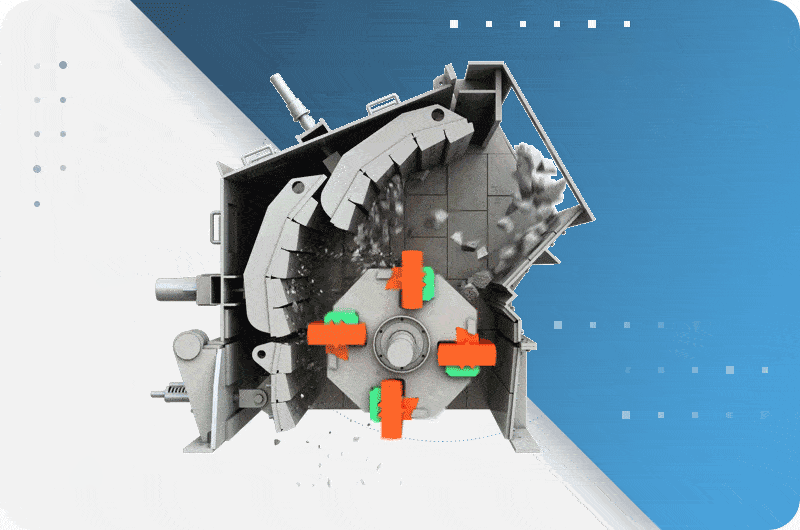
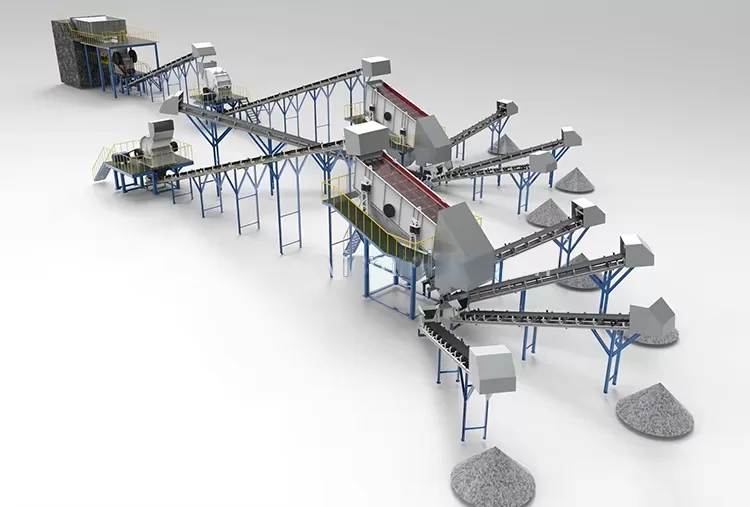
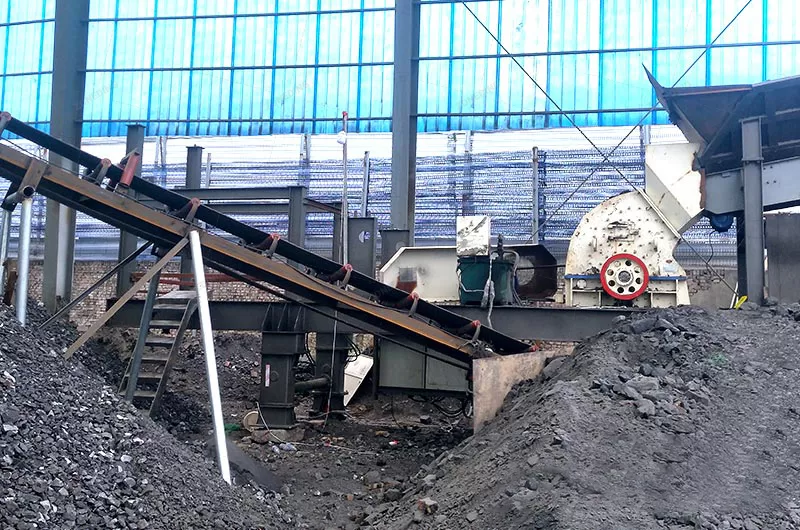
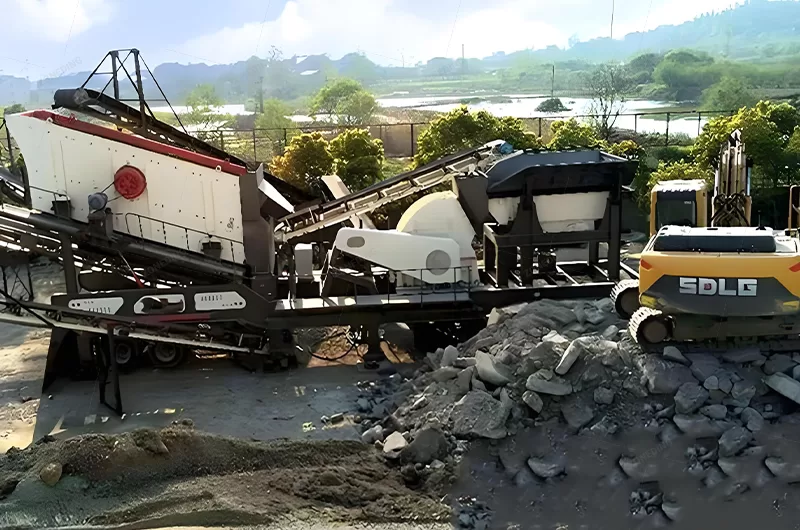
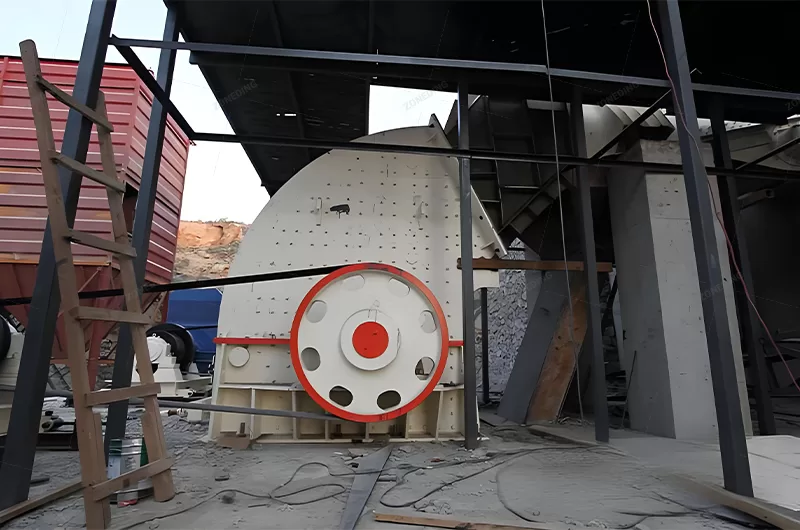
Contesta: Los factores clave que influyen en la separación son el movimiento de la mesa (carrera y frecuencia), el volumen y la pendiente del agua, la velocidad y la concentración de la alimentación y el tamaño y la forma de las partículas del material alimentado. El ajuste adecuado de estos factores es fundamental para una separación eficaz. Las pendientes longitudinal y transversal de la mesa deben controlarse con precisión. La concentración de la alimentación también debe ser la adecuada, normalmente 20-30% para minerales gruesos y 15-25% para minerales finos.
Contesta: El funcionamiento implica observar la superficie de la mesa y ajustar la pendiente, el caudal de agua y la velocidad de avance. El mantenimiento regular incluye la comprobación de piezas sueltas, la lubricación de los componentes móviles, la inspección del desgaste y la limpieza de la superficie de la mesa. El mantenimiento preventivo debe realizarse con regularidad, con intervalos que oscilan entre cada mes y una vez al año.
Contesta: Los problemas más comunes pueden incluir sacudidas de la mesa o cortes entrecortados, distribución desigual del material o separación deficiente. La solución de problemas puede incluir la comprobación de pernos sueltos, muelles dañados o desalineación, el ajuste de la tensión de la correa, la inspección de los componentes eléctricos y la lubricación adecuada. Si hay ruidos extraños, identifique la fuente y elimine el problema.
Contesta:
Ventajas: Las mesas de agitación ofrecen altos índices de enriquecimiento, son relativamente sencillas de manejar y producen zonas de separación visibles, lo que permite ajustarlas y controlarlas fácilmente. Son adecuadas para una amplia gama de tamaños y densidades de partículas.
Desventajas: Suelen tener menor capacidad de producción que otros métodos, como las plantillas o las espirales. También requieren un espacio relativamente grande y consumen una cantidad significativa de agua.
Contesta: La selección depende del material que se procese, del caudal deseado y de la gama de tamaños de las partículas. Los factores a tener en cuenta son la superficie de la plataforma, la longitud de la carrera y el diseño de la canaleta. Se recomienda consultar a un fabricante o experto para determinar la configuración óptima.
